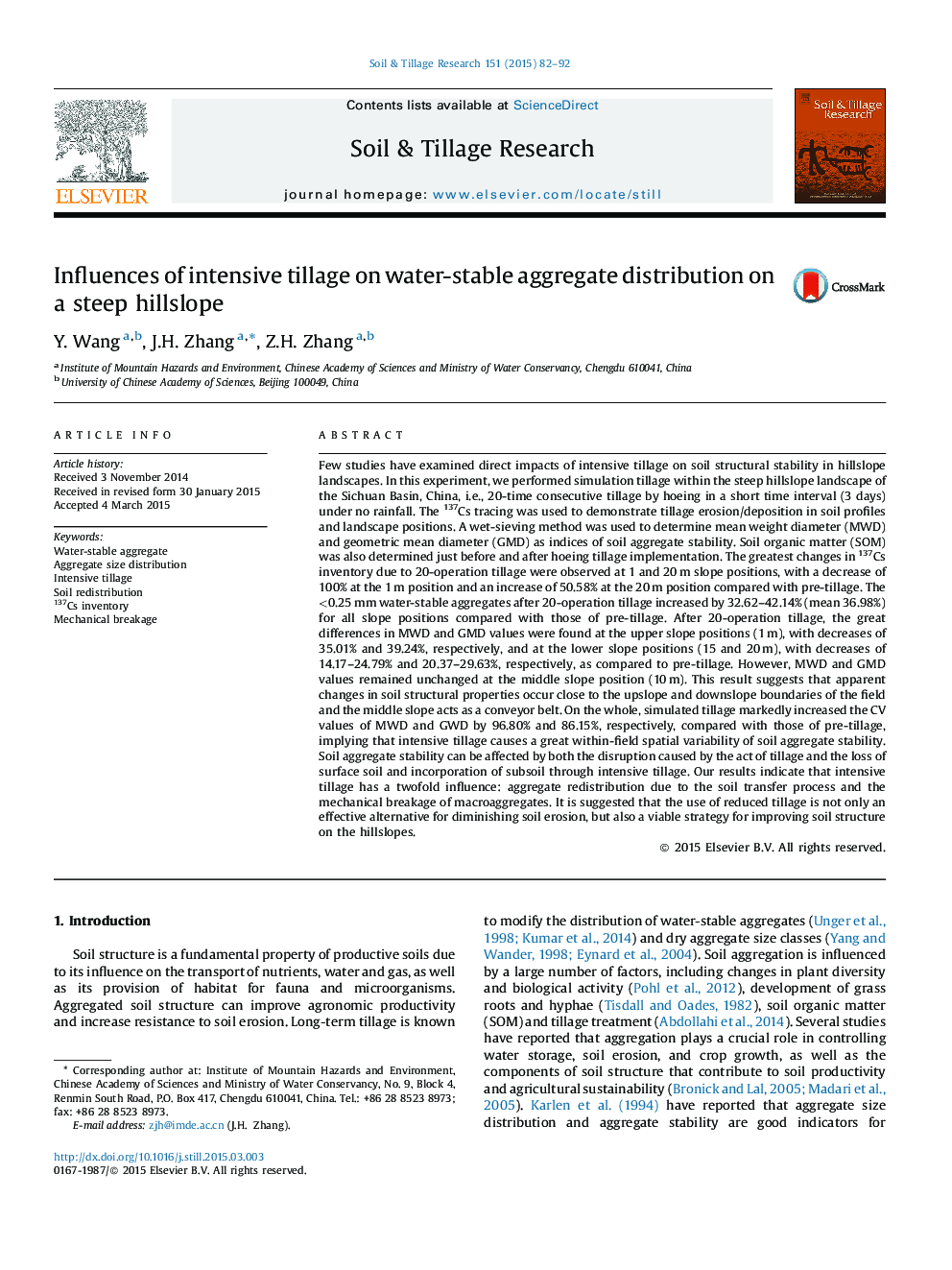| کد مقاله | کد نشریه | سال انتشار | مقاله انگلیسی | نسخه تمام متن |
|---|---|---|---|---|
| 305592 | 513036 | 2015 | 11 صفحه PDF | دانلود رایگان |
• Intensive tillage results in a decrease in soil aggregate stability.
• Aggregate size distribution is altered due to the incorporation of subsoil into the till layer.
• Shearing effects induced by hoeing change large aggregates into small ones.
• Significant changes in soil aggregate stability occurred close to both boundaries of the field.
Few studies have examined direct impacts of intensive tillage on soil structural stability in hillslope landscapes. In this experiment, we performed simulation tillage within the steep hillslope landscape of the Sichuan Basin, China, i.e., 20-time consecutive tillage by hoeing in a short time interval (3 days) under no rainfall. The 137Cs tracing was used to demonstrate tillage erosion/deposition in soil profiles and landscape positions. A wet-sieving method was used to determine mean weight diameter (MWD) and geometric mean diameter (GMD) as indices of soil aggregate stability. Soil organic matter (SOM) was also determined just before and after hoeing tillage implementation. The greatest changes in 137Cs inventory due to 20-operation tillage were observed at 1 and 20 m slope positions, with a decrease of 100% at the 1 m position and an increase of 50.58% at the 20 m position compared with pre-tillage. The <0.25 mm water-stable aggregates after 20-operation tillage increased by 32.62–42.14% (mean 36.98%) for all slope positions compared with those of pre-tillage. After 20-operation tillage, the great differences in MWD and GMD values were found at the upper slope positions (1 m), with decreases of 35.01% and 39.24%, respectively, and at the lower slope positions (15 and 20 m), with decreases of 14.17–24.79% and 20.37–29.63%, respectively, as compared to pre-tillage. However, MWD and GMD values remained unchanged at the middle slope position (10 m). This result suggests that apparent changes in soil structural properties occur close to the upslope and downslope boundaries of the field and the middle slope acts as a conveyor belt. On the whole, simulated tillage markedly increased the CV values of MWD and GWD by 96.80% and 86.15%, respectively, compared with those of pre-tillage, implying that intensive tillage causes a great within-field spatial variability of soil aggregate stability. Soil aggregate stability can be affected by both the disruption caused by the act of tillage and the loss of surface soil and incorporation of subsoil through intensive tillage. Our results indicate that intensive tillage has a twofold influence: aggregate redistribution due to the soil transfer process and the mechanical breakage of macroaggregates. It is suggested that the use of reduced tillage is not only an effective alternative for diminishing soil erosion, but also a viable strategy for improving soil structure on the hillslopes.
Journal: Soil and Tillage Research - Volume 151, August 2015, Pages 82–92
